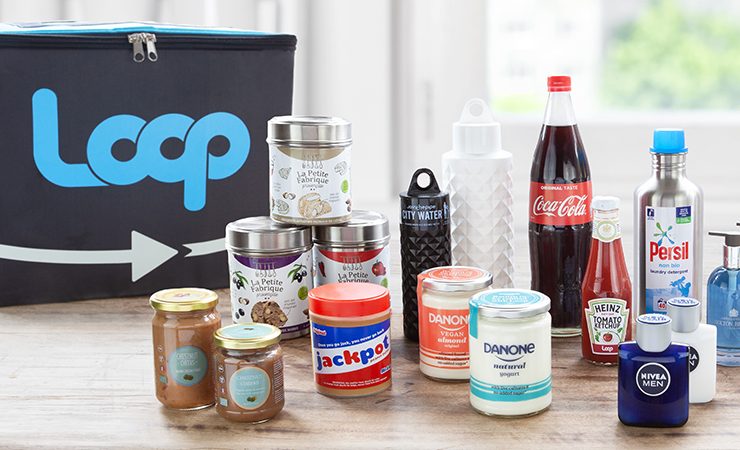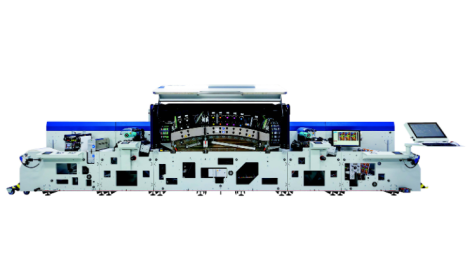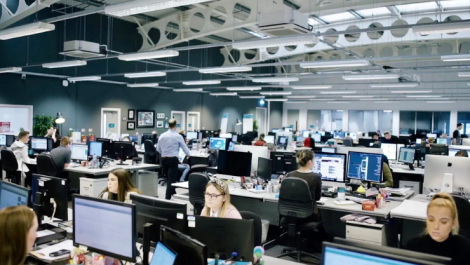Sustainability has been a key driver in packaging for many years, impacting all parts of the supply chain. And while a global health crisis did see momentary changes to practices and preferences, the conversation has now swung back to tackling the issue at hand – plastics.
Will Mercer, R&D director, graphics, label and board at Coveris, says, ‘The use of plastic is a very emotive topic and is a material that has faced the wrath of the consumer. As a result, there is a real drive on plastic reduction, but at the same time a growing awareness of the carbon impact of replacement materials, such as paper-based and compostable substrates. Going forward we are going to see a more balanced view and a holistic approach encompassing the carbon footprint and lifecycle of both the packaging and product.’
Innovia Films identifies that in recent years there has been a clear push by consumers for packaging to be either erased, reduced, more recyclable, and/or to include post-consumer waste. The plastics industry has been busy developing options to meet such requirements. The global pandemic has also altered consumer perception of packaging, including flexible packaging, with consumers realising that plastic film not only preserves the contents and extends shelf life, it also acts as a safety barrier from possible contamination.
Stora Enso, ‘firmly believes that over time there will be a shift from fossil-based high CO2 solutions to more environmentally friendly solutions such as fibre-based solutions and increased reuse of packages.’
David Ekberg, the company’s executive vice president and head of its packaging solutions division, states, ‘As the momentum for replacing fossil-based materials continues to grow more companies will turn to fibre-based packaging to lower their climate footprint.
‘The interest in environmentally friendly packaging solutions has been further accelerated by the current corona pandemic. Brand owners will use this as a time to reflect and readdress their strategies in the area much driven by continuous strong customer demand.’
Sean Smyth, industry consultant and Whitmar technical editor, says, ‘The well-publicised impact of plastic waste had turned opinion against plastics, and particularly single-use plastics but that is changing as the COVID-19 pandemic plays out.
‘In the short-term, consumers are demanding hygiene and safety ahead of all other considerations as more packaged goods are sold at the expense of loose produce in supermarkets across the world. Food safety will drive greater use of most types of packaging, across the world and some of these changed consumption patterns will stick when the pandemic is over. In the short-term, safety and supply chain security will trump sustainability – this will force rapid adoption of new measures of collection and recycling of all packaging as it is recognised as a potentially valuable resource rather than a waste, so COVID-19 will accelerate the circular economy.’
For fellow industry consultant, and 30-year P&G veteran, Michael Ferrari, this highlights how the conversation needs to be elevated, above material selection, with a greater focus needed to be placed on waste. He sees the global pandemic as having fuelled the conversation around the value in single-use plastics and how they are dealt with at end-of-life. ‘Landfills, incineration, greenhouse gases, they can all be embodied in a single problem statement. When you look at it like that, it becomes clear that a solution is needed to solve a bigger problem. Focusing just on plastics won’t solve the mess.’
Mr Mercer continues, ‘It is of note that litter levels visibly dropped during lockdown and emerged as a problem once again as restrictions began to ease, highlighting the role of human behaviour in littering and packaging disposal. This is a shift from the focus which has previously been very targeted on packaging itself, and in particular on plastic.’
‘I do not believe that the agenda will change on the demand for more sustainable packaging materials,’ continues Mr Mercer. ‘However, what will change is the understanding of the whole lifecycle of the product and the impact that any new developments can have on food waste or carbon footprint.’
Waste not, want not
According to Stephen Langstaff, global business manager, packaging at Innovia Films, ‘If collection streams were standardised across the UK and Europe, polypropylene and other polyolefins could be recycled and reused without significant problem.’
All of Innovia Films’ uncoated, acrylic coated and EVOH barrier BOPP films have already been independently certified by Interseroh as ‘Made for Recycling’.
‘The next step for Innovia is to work with partners to develop a food compliant stream so that recyclate can be incorporated back into film,’ explains Mr Langstaff.
For Mr Ferrari, recycling, reuse, composting, biodegradability, etc, are, while noble actions, still fundamentally fiddling around the edges of the root cause of the problem.
‘Studies have shown that plastics have one of the smallest profiles and lowest carbon footprints, meaning they have a very low loading and can be seen to be good for the environment during creation. Plastics have also been heavily engineered over the years to provide essential performance characteristics that benefit us as humans in terms of food preservation, cost and convenience.
‘Plastics can be beneficial in a host of ways, and shouldn’t be seen as public enemy number one.’
This is not to say that plastic doesn’t remain an issue. For example, a new study has predicted that almost one billion tonnes of plastic waste will be dumped on land and at sea by 2040. The findings from ‘Breaking the Plastic Wave’, a study written by academics at the University of Leeds along with 17 international experts, including from Pew Charitable Trusts, SystemIQ and the University of Oxford, is based on a new digital model that tracks the movement of plastic rubbish around the world. The resulting data has indicated that between 2016 and 2040, 961 million tonnes will have been discarded into the environment. By 2040, 29 million tonnes of plastic will end up in the world’s oceans, while in the year 2040 alone, the new modelling predicts 133 million tonnes of plastic waste will be burnt in the open, 77 million tonnes will be dumped on land and 29 million tonnes ending up in oceans.
‘A lot of packaging has moved from glass and metal to plastic as it is a lightweight, low carbon footprint alternative in its creation,’ Mr Ferrari picks up. ‘What we haven’t done very well is deal with the end-of-life.
‘The conversation needs to be about waste and what we do with it. Landfilling and incineration are horrible things,’ he says, but remain the main way much packaging waste is disposed of, even that which is recyclable.
‘Glass and metal cans are infinitely recyclable,’ he states. ‘The same can’t be said for plastics, which degrade each time they are recycled so are on a linear path to becoming trash. However, according to Environmental Protection Agency (EPA) statistics, only 50% of the glass collected in the US is recycled. The rest? It goes to landfill and incineration.
‘The system as it is isn’t working. The real travesty in all this is not our ability as consumers to recycle but what happens to it downstream. Much of what is done uses mechanical recycling process, which can only handle two of the seven plastic grades; for laminates – crisp and coffee bags – there is no recycling for that.’
Even processes such as pyrolysis do not equate to a fully circular model, nor do collection schemes, which Mr Ferrari notes are still on a linear path, albeit one where the outcome is delayed.
‘The conversation needs to define the problem more broadly. That way, the solution will encompass more things, and the more of the puzzle we can solve the better off we will be environmentally.’
This leads to plasma assisted gasification, he opines; a thermal molecular process that uses plasma to break the covalent bonds and convert organic, carbon-based matter into the natural elements found on the periodic table, synthetic gas (syngas). Syngas is a hydrogen-rich mixture of carbon monoxide and hydrogen that can be used as a chemical feedstock to produce methanol that is used today to make hydrocarbons, biofuels, and/or plastics, or used directly as a clean burning fuel to produce electricity.
The plasma torches elevate the temperatures in a large vessel to such high levels that they are sufficient to break the bonds of virtually all known materials, including metals and minerals, meaning the plasma assisted version of the process is suitable for robust, mixed-feed gasification, which is necessary for lightly sorted, single-stream municipal solid waste. It can also be used to process biomass materials, chemical waste and biological waste, that are otherwise harmful to the environment.
‘To me, it’s a simple two-stream process. As 85% of trash is carbon-based, plasma assisted gasification can be used to handle the bulk of waste. The other 15% is glass and metal, which are heavier and fall to the bottom, and can be collected and recycled in their own stream.’
Mr Mercer adds, ‘As infrastructure evolves to collect, recover and recycle all forms of packaging, sustainable development is likely to be less about whether packaging is made from plastic, paper or another material, which is driving current change, and be more fact-based on the total lifecycle impact of the materials of choice.’






